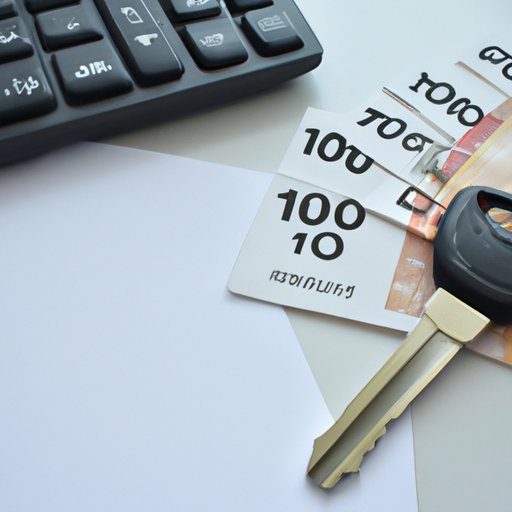
Introduction
Paying rent is crucial, and money orders are a popular payment method that provides additional security for both the tenant and the landlord. However, it’s essential to know how to fill out a money order correctly to avoid delays or loss of payments. This article will cover all the essential steps, dos and don’ts, and tips to ensure that you fill out your money orders correctly.
Step-by-Step Guide
To fill out a money order for rent, follow these steps:
- Step 1: Buy or obtain a money order from a trusted source like a post office or bank. You will pay the rent amount plus the fee to purchase the money order.
- Step 2: Fill out the “Pay To” field with your landlord’s name or the rental company, and ensure that it’s spelled correctly.
- Step 3: Add your name on the “From” or “Purchaser” line to indicate you are the person making the payment.
- Step 4: Write the correct rent payment amount in the “Amount” field. Remember to indicate the cents as well and double-check the amount before submitting the money order.
- Step 5: In the “Memo” field, write your apartment number or address, to ensure your payment is appropriately credited to your account.
- Step 6: Sign the money order to make it valid.
- Step 7: Tear off the receipt portion and keep it safe as proof of payment. Give the rental office or your landlord the remaining portion of the money order.
Dos and Don’ts
Here are a few dos and don’ts when filling out money orders for rent payments:
- Do use black ink or a pen that won’t smudge to fill out your money order.
- Do ensure that the details of your landlord or rental company are correctly and accurately written.
- Do add your apartment number and any other relevant information to the memo section.
- Do sign your money order, or it won’t be considered valid for rent payment.
- Don’t make any alterations or corrections on the money order once you’ve filled it out, as it may be viewed as an attempt to commit fraud.
- Don’t forget to tear off the receipt and keep it safe, as it’s proof of payment should any issues arise.
Video Tutorial
Here’s a video tutorial you can use as a guide when filling out a money order for rent:
Tips from the Experts
If you’re new to or unsure about filling out money orders, it’s always helpful to get tips from the experts. Here are some insights from individuals who have been using money orders to pay rent for a long time:
- Be sure to keep the receipt part and put it in a safe place. You don’t want to lose your proof of payment.
- Double-check the spelling of your landlord’s name and the amount you’re paying. Mistakes can lead to unnecessary delays or missed payments.
- If you’re ever unsure or have questions about filling out a money order, go to your local post office or bank for assistance from a professional.
Common Mistakes to Avoid
Here are some of the common mistakes tenants make when filling out money orders for rent payments that you should avoid:
- Leaving out the apartment number or address in the memo section. This can cause confusion and potential late fees or rejection of the payment.
- Not signing the money order to make it valid. Unsigned money orders will not be accepted as payment for rent.
- Writing out the wrong amounts or filling out the details in the wrong sections of the money order form.
Frequently Asked Questions
Here are some frequently asked questions about filling out money orders for rent payments:
- Can I write in pencil when filling out a money order?
- What if I made a mistake on the money order?
- How much does it typically cost to buy a money order?
No, you must use pen ink to fill out money orders as pencil marks can be easily erased or altered, causing potential issues.
If you make a mistake when filling out a money order, don’t attempt to correct it. Instead, ensure you have a replacement money order or buy a new one and fill it out correctly.
Money order fees vary depending on the provider, and it’s usually $1 to $5 per money order. Some providers charge extra for larger amounts.
Understanding the Components of a Money Order
It’s essential to understand the different parts of a money order and what information to include in each section:
- Pay To: The name of the landlord or rental company, spelled correctly.
- From: Your name or the name of the person making the payment for the rent.
- Amount: The precise amount being paid, including cents.
- Memo: Useful for indicating your apartment number or other relevant details about the rent payment.
- Signature: You must sign the money order for it to be valid and considered as payment.
- Receipt: Tear this off and keep it as proof of payment.
Conclusion
Knowing how to fill out a money order correctly is crucial when paying rent, as it provides a secure payment option for both tenants and landlords. This guide has provided a clear, step-by-step process, dos and don’ts, tips from the experts, common mistakes to avoid, and a better understanding of the different parts of a money order. Use this information to ensure that your rent payments are made accurately and on time.





